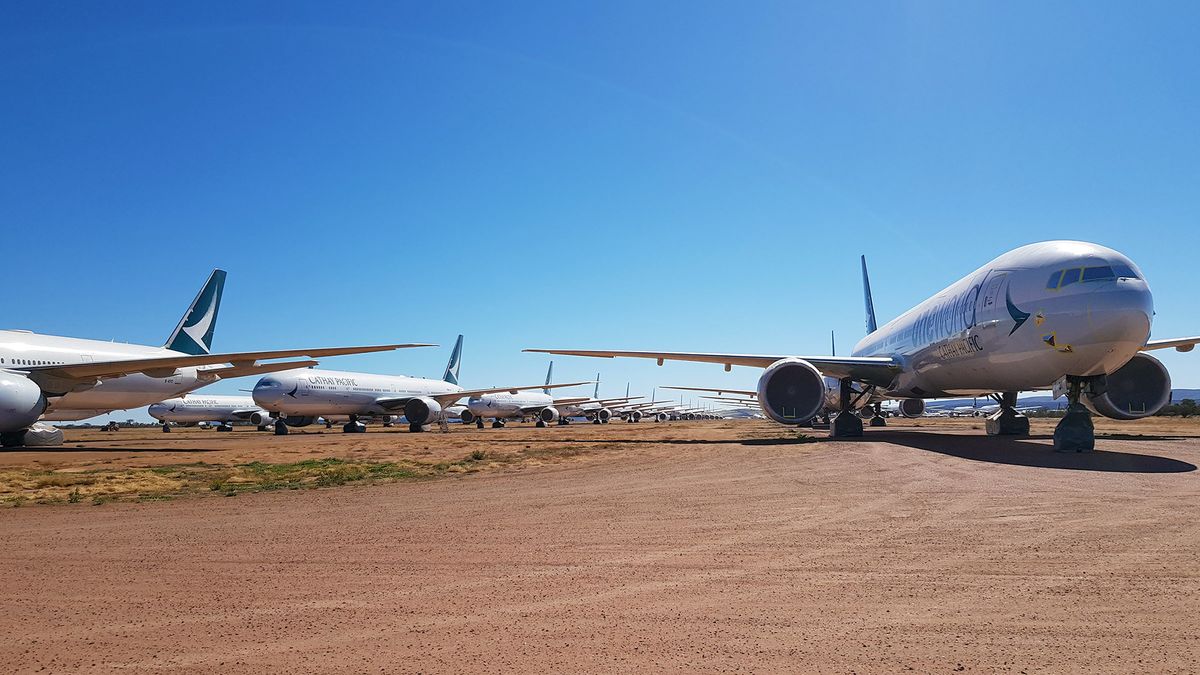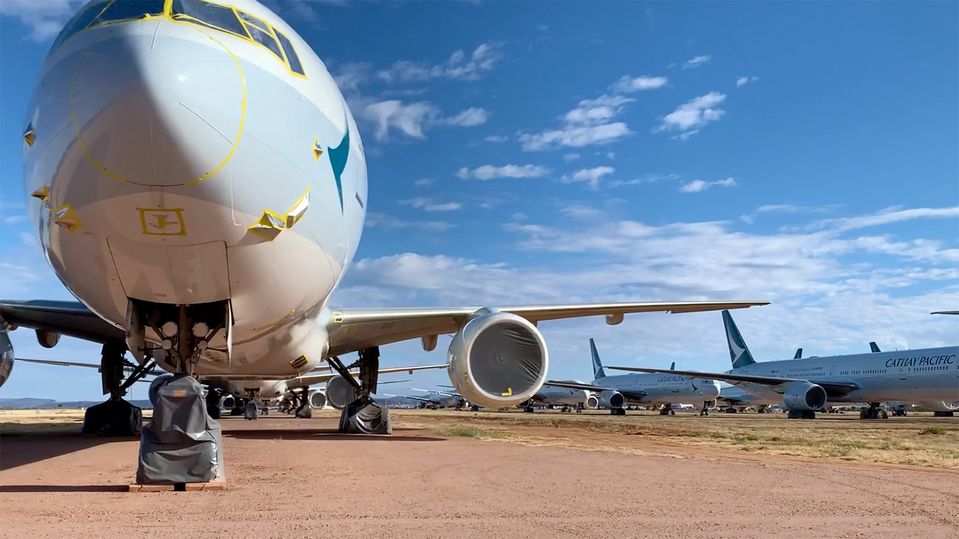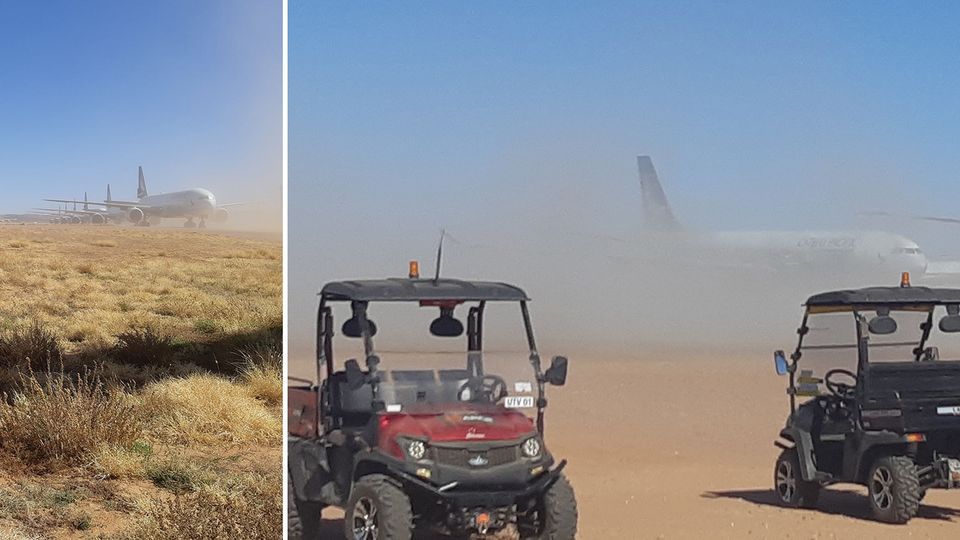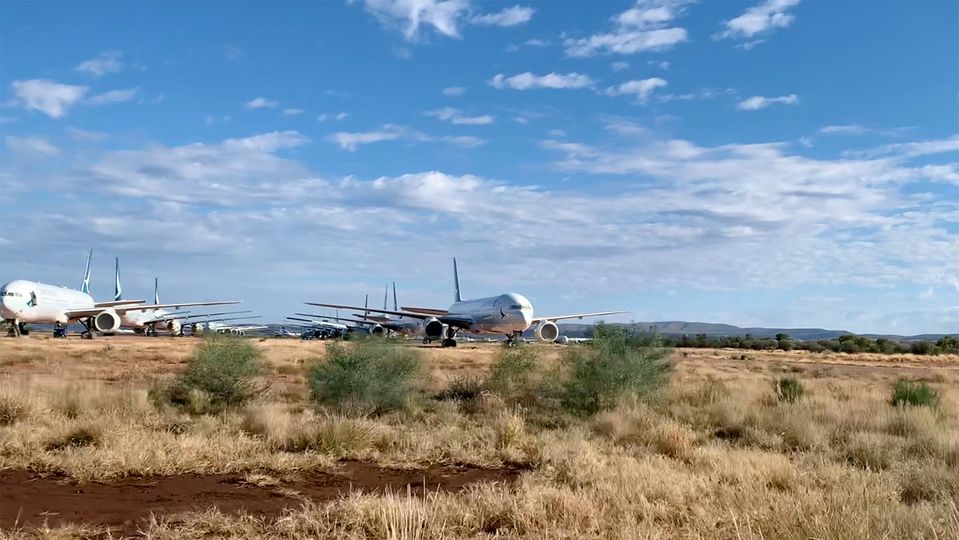Cathay Pacific’s last plane departs the Australian desert
After an extended ‘stopover’, all of Cathay Pacific’s desert-stored aircraft have made the long journey home.

Cathay Pacific’s final aircraft stored in the Australian desert has just returned to Hong Kong, and in doing so, a dark chapter of the airline’s history – one started almost four years ago in the early days of the pandemic – has now found its conclusion.
With its fleet fully reunited, the airline is once again looking to the future, with more aircraft on order and a raft of inflight enhancements including new business class in the wings.
Yet to appreciate the gravity of what’s been achieved, you need to look back to just a couple of years ago, to a time when over 70 Cathay and Dragon Air-branded aircraft were in hibernation at the Asia Pacific Aircraft Storage facility in Alice Springs.

Prior to the pandemic, Alice Springs Airport had no international flights on the departures board and rarely welcomed anything larger than a Boeing 737. That changed overnight.
For residents and travellers to the outback town, the row upon row of Boeing 777, Airbus A330 and A320 aircraft soon became a familiar, if eerie, sight amid the rust red dirt and spinifex – a stark contrast to their regular home in Hong Kong.
The area’s consistent weather and low humidity provided perfect conditions for long-term storage, though it did present significant challenges for the Cathay Pacific team, both in putting the aircraft to sleep and waking them up once again.
More than simply parking a plane and ‘removing the keys’, putting one into hibernation was a labour-intensive operation – windows, sensors, landing gear and engines all needed to be wrapped in plastic to protect them from the fine dust and curious wildlife.
“Anywhere you’re going to park an aircraft long-term really needs low humidity – less than 20% – as you don't want moisture building up inside,” a Cathay spokesperson previously shared with Executive Traveller.
“Likewise, somewhere with no severe weather events, such as typhoons or heavy rain. Alice Springs was ideal for that, but the remoteness posed some of its own challenges.”
Those challenges were mostly logistics-related, with spare parts from Cathay’s Hong Kong HQ having to be sent via the capital cities (Alice doesn’t have customs or border control). Bulky items also had to be transported by road.
There was a never-ending maintenance schedule too, including periodic checks every seven, 14 and 30 days. And as for the eventual reactivation, that was even more complex, with a small army needed to achieve the feat.
Over the course of the parking programme in Alice Springs, Cathay says more than 16,000 of these periodic checks were performed, totalling some 800,000 hours of labour.
Alex McGowan, Cathay Pacific’s Chief Operations and Service Delivery Officer, described the storage and reactivation as a once-in-a-lifetime undertaking, “the scale and complexity of which has never been seen before at Cathay.”
“An incredible amount of work goes into keeping an aircraft safe and protected when it isn’t flying, and to then reactivate it for entry back into regular service. To do this for more than 85 aircraft long-term parked overseas, as well as to manage the large number of aircraft that were parked in Hong Kong, is a phenomenal achievement.”
And with that chapter in Cathay’s story closed, another can finally begin, starting with over 70 new aircraft on order and the right to acquire a further 52 aircraft down the track.
In addition, it’s gearing up for the anticipated launch of its Boeing 777 Aria Suites business class and premium economy in the coming months, with plans to also add more flights to Australia, Europe and North America, to suit demand and availability of aircraft.




Qantas - Qantas Frequent Flyer
22 Aug 2015
Total posts 56
Good work all peeps up in the NT !! Would have created quite a few jobs needed during the pandemic.
Hi Guest, join in the discussion on Cathay Pacific’s last plane departs the Australian desert